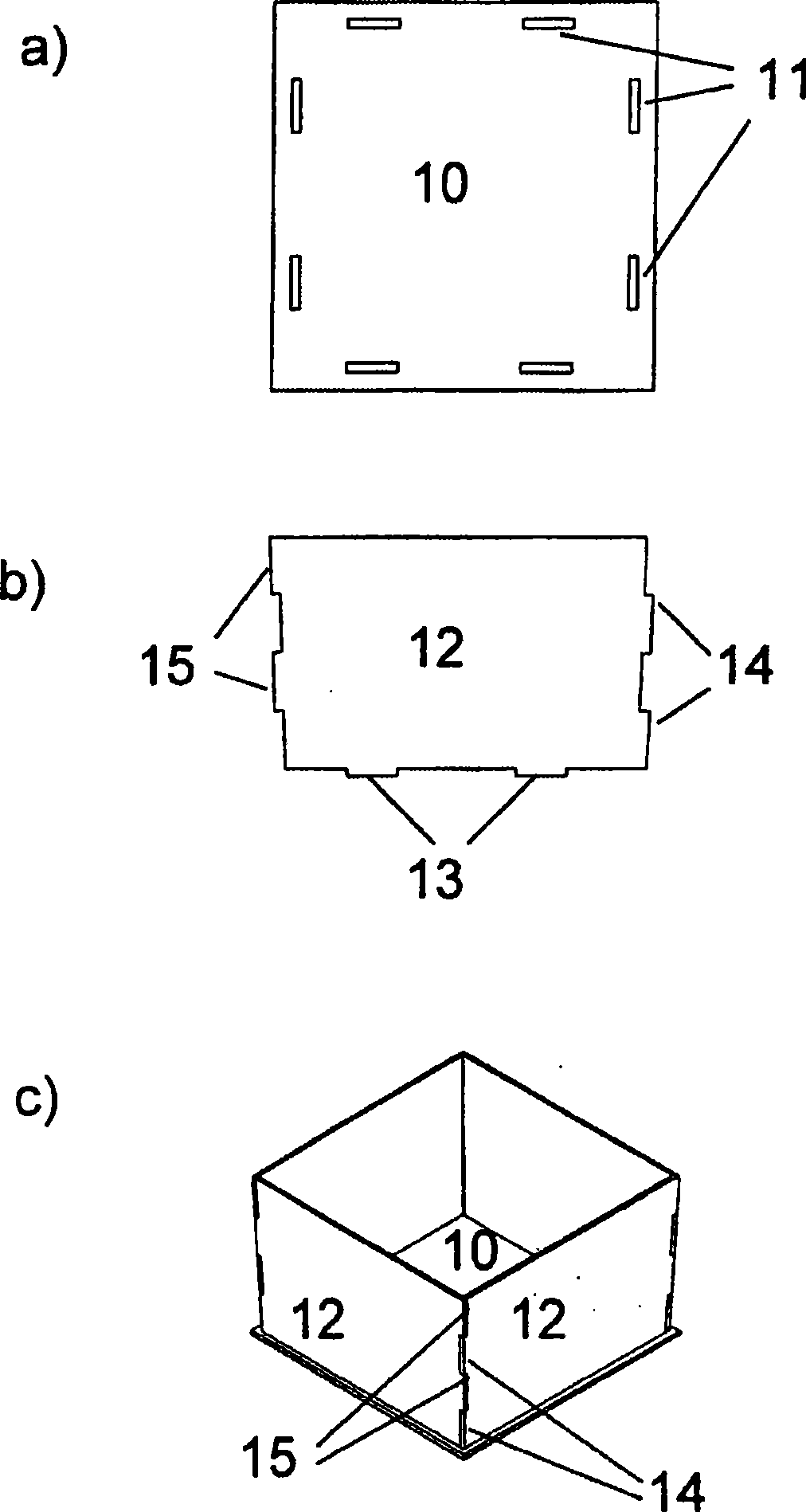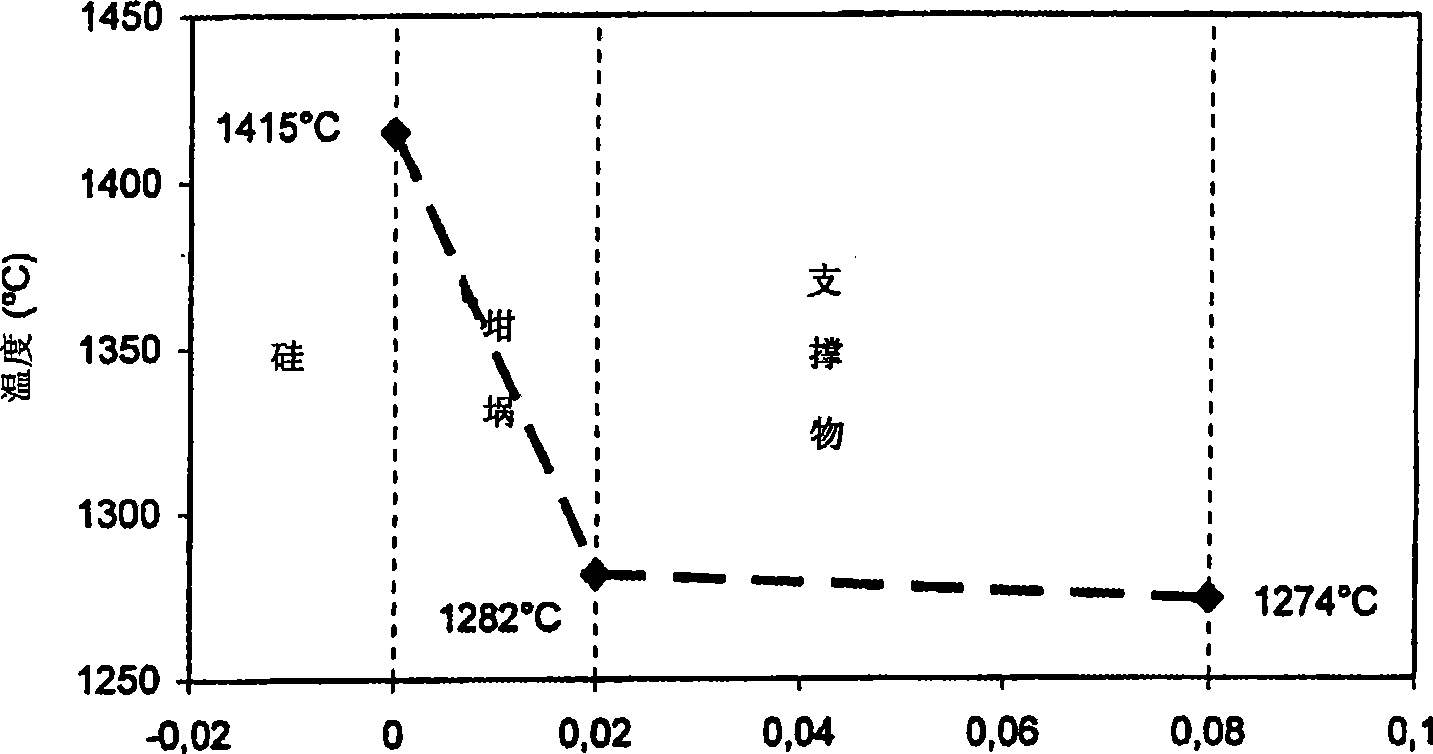Method and crucible for direct solidification of semiconductor grade multi-crystalline silicon ingots
A technology for directional solidification and polycrystalline silicon ingots, which can be used in self-solidification methods, polycrystalline material growth, crucible furnaces, etc., and can solve problems such as battery efficiency reduction
- Summary
- Abstract
- Description
- Claims
- Application Information
AI Technical Summary
Problems solved by technology
Method used
Image
Examples
Embodiment 1
[0054] The crucible according to Example 1 is schematically represented in figure 1 a~1d.
[0055] figure 1 a shows a base plate 1 which is a square plate with grooves 2 along each side on its upward facing surface. The grooves correspond to the thickness of the side elements forming the walls of the crucible so that the lower edges of the side walls can enter the grooves and form a tight fit. Alternatively, said side elements and bottom grooves have complementary shapes, such as ploughs and tongues.
[0056] figure 1 b shows a rectangular wall element 3 . Two of these elements will be used on opposite sides, see figure 1 d. The side element 3 has grooves 4 on both sides along the surface towards the inner surface of the crucible. The groove 4 is dimensioned such that it fits closely with the sides of the wall element 5 , which is placed vertically relative to the wall element 3 . The groove 4 and the sides of the wall element 3 may have a congruent angled orientation ...
Embodiment 2
[0060] The crucible according to Example 2 is shown in figure 2 a~2c.
[0061] figure 2 a shows the bottom plate 10, which is a square plate with elongated holes 11 along each side thereof. The holes are sized so that they accommodate the sidewall protrusions facing downward and form a tight fit. It is also foreseen to include a groove (not shown) aligned with the central axis of the hole 11 , similar to the groove 2 of the bottom plate 1 of the first embodiment.
[0062] figure 2 b shows a wall element 12 . There are four of these elements, see figure 2 c. The wall element 12 has two protrusions 14 , 15 and two downward protrusions 13 on each side. The side projections are dimensioned such that when the two wall elements 12 are assembled to form adjacent walls of the crucible, the projections 14 enter the spaces between the projections 15 and form a tight fit. The downward facing projection 13 is sized to fit the hole 11 and form a tight fit, see figure 2 c. Th...
Embodiment 3
[0066] Example 3 Calculation of temperature distribution in a furnace using prior art quartz crucibles image 3 The steady-state one-dimensional temperature gradient calculated at the onset of crystallization using the standard furnace method is shown in . The temperature inside the bottom of the crucible was 1415°C. The bottom of the crucible is 2 cm thick and has a thermal conductivity of 1.5 W / mK. The support plate is 60mm thick and its thermal conductivity is 80W / mK. To remove 10kW / m 2 , the temperature at the bottom of the support plate must be lower than 1398°C. This heat transfer rate can provide a crystallization rate of up to 0.9 cm / h, depending on the heat transferred from the top chamber.
PUM
| Property | Measurement | Unit |
|---|---|---|
| thickness | aaaaa | aaaaa |
Abstract
Description
Claims
Application Information
 Login to View More
Login to View More - R&D
- Intellectual Property
- Life Sciences
- Materials
- Tech Scout
- Unparalleled Data Quality
- Higher Quality Content
- 60% Fewer Hallucinations
Browse by: Latest US Patents, China's latest patents, Technical Efficacy Thesaurus, Application Domain, Technology Topic, Popular Technical Reports.
© 2025 PatSnap. All rights reserved.Legal|Privacy policy|Modern Slavery Act Transparency Statement|Sitemap|About US| Contact US: help@patsnap.com



